“Kindness” was the focus of class on Tuesday.
In Nia, once we set the focus, we step into the practice. We can step into kindness again and again as our practice. Kindness is always present. The body is your cocoon of kindness. Kindness is inside the body. The body’s own kind. Your kind of kindness.
Cultivate the strength to move toward kindness and away from fear.

Kindly hold your body in your arms. Touch the body with kindness. Touch kindness itself. Pour kindness into your body and your heart. Offer kindness to your head — kindness to the thinking mind and kindness to the physical head. Consciously carry your own kindness. You can choose how to carry kindness.
Let’s offer kindness to the past. Kindness to the future. Kindness to the parallel universes. Kindness to right now.
Let’s become warriors of kindness! Kindness is on the march! Sometimes it takes courage and ferocity to sustain kindness in this world. Let’s band together in kindness, with the beauty of our ancient, indigenous selves shimmering, to love the hell out of this kind of world and that kind.
Splash in the infinite pool of kindness. Splash and make a a giant mess with kindness. Splash yourself, splash each other. Kindness can make a ruckus! Kindness can be playful.
Why is it we call our species humankind? Partly, it means we’re the kind of being that’s the human kind. It must also be that the kind of human that we are is kind.
Here’s what the Oxford English Dictionary says:
kind Exhibiting friendly or benevolent disposition. From Old English cynde, cunde.
kind Birth, origin, descent. From Old English cunde, kunde.
kin A group of persons descended form a common ancestor. From kun, Aryan, “to produce, engender, beget,” related to Latin, genus, Greek genesis.
This tells us humankind is descended from a common ancestor — Kindness.
Breathe kindness into your bones — the marrow bone. Breathe kindness into your belly — soft belly, merciful belly. Breath kindness into the heart, the lungs, the skin, the endocrine system, nervous system, reproductive system.
Fill the alchemical cup of the body with kindness, that body who has been kind enough to bring us to this very moment, this very spot.

Receive kindness from the body. Kindness from the skin kindly enveloping the body. Receive kindness from the heart kindly beating the drum of love throughout our lives. Receive kindness from the lungs who bring spirit into and out of the body. Receive the kindness of the nervous system, little lightnings that make it possible to think and feel and be and go and do and rest. Receive the body’s kindness, kindly accompanying us and every step of our journey since conception.
Receive kindness from the food you ate and will eat today, sacrificing its own kind to kindly become the human kind. As life we are destined to eat other life. Kindly metabolize the grief of eating other kin into a kind of beauty for all kinds.
What kind of sensation does kindness bring to the body?
Look into the eyes of Kindness. Look into your own eyes.
Look out into your own life. Feel the river of kindness flow through your body and carry you forward, again and again into your kind of life.
Tags: Nia Class Focus
My body is exquisite. This was the focus of Thursday’s Nia practice, chosen at random.
Your body is exquisite.
Your body is exquisite all the time — not just when you feel good, happy, in love, healthy, look a certain way or are successful. Your body is exquisite all the time. Your body is exquisite when you feel depressed, angry, sick grief-stricken or lost.
Your body is the exquisite horse that carries you, like a Scythian lord or lady, with exquisite dedication and nobility across the exquisite steppes and mountains and streams of your life, up and down, in and out and through, sniffing the scent on the breeze and always knowing how go, when to rest, when to gallop, when to play and when to listen. Exquisitely.
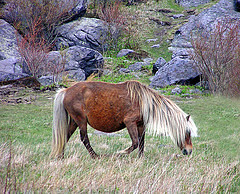
“Exquisite” is from the Latin ex + quæere, “to seek out,” related to “query,” and therefore “inquire,” “to seek within.”
Seek out the vast expanse of your body’s exquisiteness. Seek within the deep pools of your your body’s exquisiteness.

Your body’s way is exquisite. Like a jaguar slinking in its own natural, biological way. Like a rabbit twitching. Like leaves rustling. Each being moves its body’s way.
Bones, muscles, skin, beating heart, lungs, belly, brains, mitochondria, liver, hands, feet and knuckles are all exquisite. Your biological soul is exquisite. The Earth is exquisite.
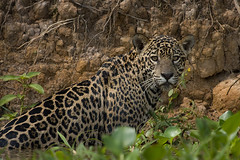
Because in nature there is no verb “to be” you cannot actually say “My body is not exquisite.” (That’s a joke — but it’s true.) The verb “to be” is very convenient for bookkeeping, but not so much for living a somatic life.
Your uniqueness is exquisite. And it manifests in your exquisite body of 75 trillion exquisite cells — which is the Earth. Seek it out.
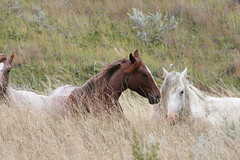
Tags: Etymology · Nia Class Focus · Ongoing Nia Classes
The focus of today’s class was Nia Principle #13: Dancing What You Sense.
When we experience the essential lesson of Nia — that life is lived through sensation — we become connected, connected to the body, connected to our lives, connected to the world, and connected to the moment and to the great presence that lives in us and through us.

Here’s what the 15th century Indian ecstatic poet Kabir has to say about living life fully present in the body, right here, on the Island of Now in the Ocean of All Time:
I said to the wanting-creature inside me:
What is this river you want to cross?
There are no travelers on the river-road, and no road.
Do you see anyone moving around on that bank, or resting?
There is no river at all, and no boat, and no boatman,
There is no towrope either , and no one to pull it.
There is no ground, no sky, no time, no bank, no ford!
And there is no body, and no mind!
Do you believe there is some place that will make the soul less thirsty?
In that great absence, you will find nothing.
Be strong then, and enter into your own body;
there you have a solid place for your feet.
Think about it carefully!
Don’t go off somewhere else!
Kabir says this: just throw away all thoughts of imaginary things
and stand firm in that which you are.
Kabir
translated by Robert Bly
The Kabir Book
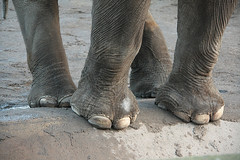
“Be strong then, and enter into your own body; there you have a solid place for your feet.”
I spoke the last part of this poem in class today. These words have been a north star for me for thirty years, ever since I first heard my beloved teacher, Robert Bly, chanting poetry to sitar and tabla.
Robert’s words and wisdom, bringing the poetry of Kabir, Rumi, Mirabai, Hafez, Neruda, Machado, Lorca, Jiminez and, of course, Rilke, to English speaking people, have, along with my parents, literally made me the person I am today, dancing through life.
It takes strength to enter your body. It takes strength not to flee the present moment and go off somewhere else. It takes a strength that is both determined and so in love with life that, somehow in spite of it all, somehow, because of it all, we summon the courage to love what we love more than our fears and in so doing, loving and grieving, weeping and laughing, we enter into our own bodies again, here, now, living what we sense.
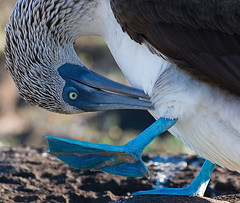
Tags: Nia Class Focus · Ongoing Nia Classes · Poem of the Week · The Foundation of Nia
The focus of today’s class was “Acceptance.”
As promised, here is the etymology of acceptance:
Latin accipere, to receive
From ad + capere
ad, toward, near, to add
capere, to take, to capture
“Receive” is from the same Latin root, recipere, from re + capere, to take again.
We can take in the moment again and again. We can hold it near. We can lean toward life it as it comes walking, as it comes dancing, offering us over and over the gift of the present, the gift or our lives.
As Nia teacher Miel Freeman said today in class, when life presents us with things that cause pain, acceptance is when we surround those experiences with love.
Out beyond ideas of rightdoing and wrongdoing
there is a field. I’ll meet you there.
– Jelaluddin Rumi
translated by Coleman Barks
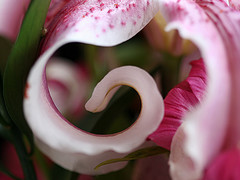
Tags: Etymology · Nia Class Focus · Ongoing Nia Classes
April 29th, 2010 · 1 Comment
Here are three of my favoerite poems by Kabir.
When my friend is away from me, I am depressed;
nothing in the daylight delights me,
sleep at night gives no rest,
who can I tell about this?
The night is dark and long . . . hours go by . . .
because I am alone, I sit up suddenly,
fear goes through me . . .
Kabir says: Listen, my friend,
there is one thing in the world that satisfies,
and that is a meeting with the Holy.
– Kabir
translated by Robert Bly,
The Kabir Book (Beacon Press)
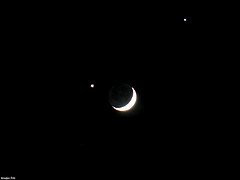
The darkness of night is coming along fast,
and the shadows of love close in the body and the mind.
Open the window to the west, and disappear into the air inside you.
Near your breastbone there is an open flower.
Drink the honey that is all around that flower.
Waves are coming in: there is so much magnificence near the ocean!
Listen: Sound of big seashells! Sounds of bells!
Kabir says: Friend, listen, this is what I have to say:
the Guest I love is inside me!
– Kabir
translated by Robert Bly,
The Kabir Book (Beacon Press)

It is time to put up a love-swing!
Tie the body and then tie the mind so that they
Swing between the arms of the Secret One you love,
Bring the water that falls from the clouds to your eyes,
and cover yourself inside entirely with the shadow of night.
Bring your face up close to his ear,
and then talk only about what you want deeply to happen
Kabir says: Listen to me, brother, bring the shape,
Face, and odor the Holy One inside you.
– Kabir
translated by Robert Bly,
The Kabir Book (Beacon Press)

Tags: Poem of the Week
April 29th, 2010 · 1 Comment
April is National Poetry Month, and today, April 29th, is Poem In Your Pocket Day. In honor of this, each student chose a poem at random from the basket. Our focus for class was the cross-pollination of the first line of each person’s poem, read aloud:
Wage peace with your breath.
The same stream of life that runs through my veins night and day
runs through the world and dances in rhythmic measures.
He who binds to himself a joy . . .
When my friend is away from me, I am depressed.
Nothing in the day light delights me.
Before this longing,
If you don’t know the kind of person I am,
Sigh deeply! Remember how great this is! Go on a wild date!
Be instantly on a fabulous adventure.
If you don’t know the kind of person I am,
It’s time to put up a love-swing.
Fall-madly-in-love day.
Sigh deeply! Remember how great this is! Go on a wild date!
Thank you to our poets, Judyth Hill, Rabindranath Tagore, William Blake, Kabir, Theodore Roethke and William Stafford.
You can read each poem in it’s entirety — as well the poems no one ended up choosing today by Rainer Maria Rilke, Naomi Shihab Nye, David White, Mary Oliver, Kabir, David Wagoner and Nanao Sakaki — at Poem of The Week.
Feel the poem of your body, all 75 trillion cells a mysterious, hybrid, multi-lingual, amalgamated poetry jam. Each cell speaks its own line, its own word, its own sound, its own vibration, its own name. Listen to the poem of your body, the poem given to you by the holy which is your life. Be that poem.
The Tzutzujil Maya people say that the spirits are constantly speaking this world into being. Every blade of grass, every floor board, every piece of plastic, every bird, wind and our lunch is being sung and spoken into life by the holy. The Torah says the same thing: there’s an angel that speaks each being into life.
So this world is really one great cacaphonous poem, a strange and beautiful hybrid poem, or perhaps the world is an infinite multitude of poems all being said simultaneously like a great gaggle of geese all talking at once.
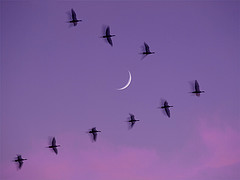
Tags: Nia Class Focus · Ongoing Nia Classes · Poem of the Week
February 2nd, 2010 · 3 Comments
For the last two weeks, we have been engaged in “Passion: The Practice of Form and Freedom.”
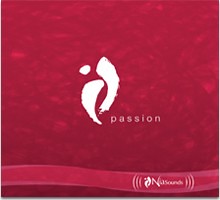
During week one — The Practice of Freedom — we have danced to the music of the Nia routine Passion, using Nia’s eight stages of FreeDance.
During week two — The Practice of Form , starting on Thursday, February 4 — we dance the original choreography of Passion that Nia co-founders Debbie Rosas and Carlos AyaRosas created to the same music.
(You can listen to the music of Passion free at http://nianow.com/niasounds/passion-cd )
The intent of “Passion: The Practice of Form and Freedom” is to first experience the freedom of your own body’s way, moment by moment, in relationship to the music, the self and the mystery. And then, after that, to experience your body’s relationship with the form of choreography.
Form and freedom are like yin and yang, like inhale and exhale, like sound and silence. Each gives birth to the other. Each depends on the other to reveal its true nature. Each contains the seed of the other in its belly.
I can bring a full experience of the sensation of freedom right into any form. I can discover that freedom itself actually has an anatomy.
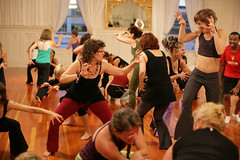
FREEDOM
FreeDance is Nia White Belt Principle #4. FreeDance is how Nia teachers organically create and learn Nia routines.
The practice of FreeDance is a foundation for sensory awareness and creativity. Through its eight stages, FreeDance offers a way to get out of the mind and drop into sensation — the sensation of the physical body, the sensation of the music, the sensation of the emotional body and the sensation of intuition.
FreeDance offers the physical body “an alchemical process to physically respond to change moment by moment.” FreeDance offers the mind, “a way into the creative void of conciousness.” FreeDance offers the emotional body a way to express all feelings freely. FreeDance offers the spirit play, and a journey to “the playground of all playgrounds — the unexplored moment.”*
FORM
When they were on the path of creating Nia, Debbie and Carlos studied various movement forms, nine of which become the elements of Nia. They did this in order to “balance the feminine with the masculine, the precise with liquid fluidity and the powerful with the yielding.”
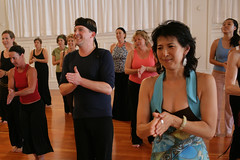
Debbie and Carlos took the freedom inherent in their two bodies, minds, hearts and spirits and essentially FreeDanced the nine movement forms into something new, what we know now as Nia.
Each of the nine movement forms has a unique sensation and energy signature: From the healing arts, Alexander Technique, the Feldenkrais Method and Yoga; From dance arts, modern dance, jazz dance and Duncan dance; and from Martial arts, Tai Chi, Aikido, and Taekwondo.
Each form stimulates different breathing responses, different emotional responses. They cross train body, mind emotions and spirit . They offer a way to speak many languages.
Look how each person in these photographs is doing the choreography differently.

Each person brings to the form of the movement their own uniqueness — physically, mentally, emotionally and spiritually. A different angle of the hand, a different feeling in the face, a different gaze of the eyes, a different intent. Each person finds their own unique freedom of expression within the form.
Form is the vessel of freedom. Freedom is the vitality of form.
This is Nia’s practice of form and freedom: Bring the freedom of your uniqueness and the form of your body into the temple of the moment where the mudras created are both traditional and never-before-seen.
Nia, like life, is the practice of form and freedom.
FORM & FREEDOM: A CONVERSATION
If you have been to any of the “Passion: The Practice of Form and Freedom” classes, please comment below. I would love to hear from you about your experience FreeDancing, doing the choreography of Passion or both.
What did you discover? What did you feel? What did you sense?
*All quotes from the Nia White Belt Manual, 2001, by Debbie Rosas and Carlos AyaRosas.
Tags: Form and Freedom · Nia Class Focus · Ongoing Nia Classes
January 12th, 2010 · 3 Comments
The focus of today’s Nia practice, chosen at random from the basket of cards, was “Loving Movement.”
Loving movement – as in “I love to move!”
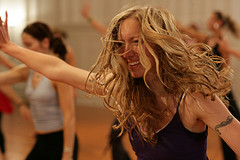
Loving movement – as in a gesture of love or an offering to a person or to the Holy.
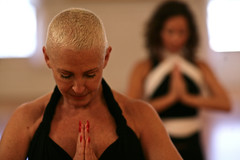
Loving movement – as in a chapter, an episode, a section of music or life.
Loving movement – as in a revolution, like the civil rights movement, the women’s movement, the men’s movement, and now, the loving movement of collective consciousness toward more loving.

The motion of love comes in all sizes, shapes, layers and dimensions.
The body itself has a natural affinity for loving movement, as does the mind, the heart, the spirit and the energy body. We could actually say loving movement is a definition of life.
All life is movement, even if it’s dead or so-called inanimate. Atoms and molecules moving, gravity and electricity moving, the imagination and the spirit spiraling, contracting and expanding. All 75 trillion cells of the body are in constant, loving movement.
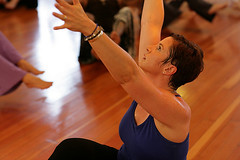
All life is love. The movement of heaven’s energy pours down into the flesh. The movement of the Earth’s energy rises up through the feet. These are movements of love. And moving in between heaven and Earth is the mystical third thing, known as life, known as now, known as the human being, known as the love child of heaven and Earth, moving, wriggling, dancing, crawling, reaching, shimmering, intending.
How do I recognize the sensation of loving movement?
I ask my body, “Body, precious body, are you experiencing the sensation of loving movement?” The asking itself is a loving movement. Listening for my body’s reply is loving movement.
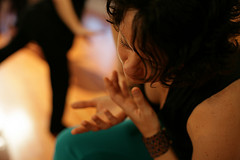
Loving movement is a practice. Like Nia’s practice of the joy of movement, loving movement is a practice that can sit right next to any emotion, any thought and any intent. The practice of martial arts is loving movement when we understand the martial arts is the practice of just enough – using just enough force, not too much, not too little, just right.
A path, such as Nia or the martial arts or music, is itself a loving movement. And our response as we move along and toward that path is a loving movement.
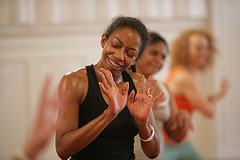
Breathe in the loving movement of the breath, in and out, like the ocean tide, and ride the waves of loving movement in the belly. Let the movements of love soar through the body.
Be held by the moving fields of love, moving and being moved. Let the waves of breath carry the body. Let the waves of love carry the body. Rock yourself in your own arms and let the loving movement of the Earth hold the loving movement of who you are from underneath.
Tags: Nia Class Focus · Ongoing Nia Classes

The focus of our Nia practice today, chosen at random from the cards for 2010, was “commitment.”
Whenever we see a word with the prefix, “com-” we know we’re in the field of relationship. “Com-” is from the Latin, cum, meaning “with.” We are in relationship with . . . everything.
The suffix of “commitment” is from the Latin, mittere, “to send,” “to place,” “to put,” “to throw,” “to release.” This tells us commitment involves some kind of motion with another, be it with oneself, another being or a state of being.
We could say that commitment is to be with what is placed before us. We could say that commitment is the state of being thrown together with another, blown by the winds of chance into this very moment. Or that commitment is the motion of releasing one’s heart with another.
Commitment says I am moving in relationship. I’m being sent, placed, tossed or released in relationship. Maybe the motion of my commitment is with a friend, a partner, a path. Maybe the motion of my commitment is with my body, the Earth, the Holy.
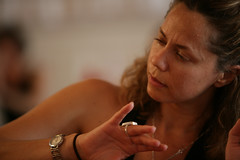
In the Nia practice, we call the ring finger the “commitment finger.” Each finger carries a unique energy. The energy of commitment moves along the shoulder blade, up and down the back of the arm and the ring finger. This meridian, the Triple Warmer, guides the motions of chi and fluids through the body.
Placing the commitment finger and the thumb — the nurturing finger — together with each other creates the prithvi mudra. It’s a practice for cultivating patience and tolerance, both of which are useful in relationship.
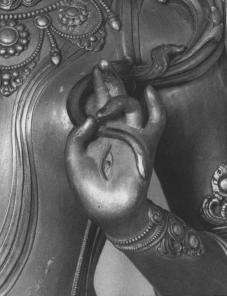
What is the sensation of commitment? What is the sensation of moving in relationship?
Gravity shows that the Earth is committed with us, and we with the Earth. The Earth and my body are thrown together in relationship by gravity, the attraction of two masses for each other. I can feel the Earth’s commitment, her motion toward me, and with every movement, every step, and every time I make contact with the ground, I can feel the motion of my commitment with the Earth.
Tags: Etymology · Nia Class Focus · Ongoing Nia Classes
“I accept my brilliance.”
This was the focus of our Nia practice today, the first class of 2010.
Your mission — should you choose to accept it — is your brilliance.
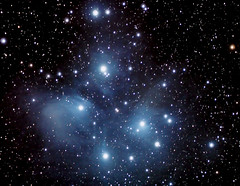
Accept the wild brilliance of your body — with all its 75 trillion cells shimmering like stars, metabolizing and burning bright in the universe of your flesh and bones, like so many busy hummingbirds, keeping the home fires burning in the hearth of the temple of your precious body.
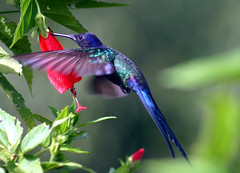
Accept the wild brilliance your mind, just as it is — left brain, right brain, corpus collosum, cerebellum, brain stem and spinal cord, all neurons shimmering their messages like miniature lightnings, like fire flies — and that greater aspect of mind that includes but is beyond the nervous system.
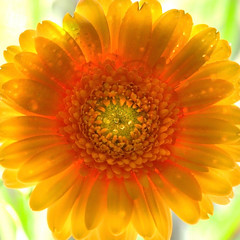
Accept the wild brilliance of your own heart — beating inside your chest, drumming out its rhythmic song of life to which we stomp and dance, its heart flame brilliant, whether shy or gregarious, grief stricken or joyful, playful or contemplative.

Accept the brilliance of your wild spirit — your uniqueness, your energy field that shimmers and shines, that sways and gallops, that sparkles and glides its way through the steppes of the Mystery.
Accept and receive from the holy the gift of your brilliance.
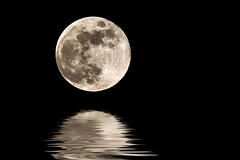
Your mission — should you choose to accept it — is to glisten, luminesce, radiate and beam forth the shine of your natural soul, and to rest within and be nourished by its wild shimmering brilliance, as the moon is by the sun and, as well, the very ground of our own Earth-body-soul-home.
Do you accept?
Just say Yes!
Tags: Dancing Through Life · Nia Class Focus · Ongoing Nia Classes


































